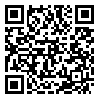BibTeX | RIS | EndNote | Medlars | ProCite | Reference Manager | RefWorks
Send citation to:
URL: http://rehabilitationj.uswr.ac.ir/article-1-1479-en.html
2- Pediatric Neuro-Rehabilitation Center, Department of Rehabilitation Management , University of Social Welfare and Rehabilitation Sciences, Tehran, Iran. ,
3- Pediatric Neuro-Rehabilitation Center, University of Social Welfare and Rehabilitation Sciences, Tehran, Iran., University of Social Welfare and Rehabilitation Sciences, Koodakyar Ave, Daneshjoo Blvd, Evin, Tehran, Iran.
4- Department of Biostatistics, University of Social Welfare and Rehabilitation Sciences, Tehran, Iran., University of Social Welfare and Rehabilitation Sciences, Koodakyar Ave, Daneshjoo Blvd, Evin, Tehran, Iran.
Objective: The purpose of this study was to assess assistive devices needs of adolescent students with hearing impairment in Ahvaz city.
Materials & Methods: Although 69(96%) students had digital hearing aids 44(61%) reported difficulties in watching television, 66 (92%) in using alarm clocks, 24(33%) in hearing door and telephone ringing, 63(88%) in using telephone, 14(19%) in face to face communication and 46 (64%) in class participation. Almost none of the participants were aware of existence of above mentioned assistive devices. After introducing the devices, each of the devices, were reported to be highly needed by 2 (3%) to 69 (96%) students and their parents.
Results: Although 69 (96%) students had digital hearing aids, 44 (61%) were reported to have difficulties in watching television, 66 (92%) in using alarm clocks, 24 (33%) in hearing door and telephone ringing, 63 (88%) in using telephone, 14 (19%) in face to face communication and 46 (64%) in class participation. Almost none of the participants were aware of existence of above mentioned assistive devices. After introducing the devices, between 2 (3%) to 69 (96%) were reported to need each device.
Conclusion: Adolescents with hearing impairment should be widely informed of assistive devices which could be useful to them. Findings on this study could be use in planning for providing assistive devices for adolescents with hearing impairments.
Received: 22/02/2014 | Accepted: 30/08/2014 | Published: 22/12/2014
| Rights and permissions | |
 |
This work is licensed under a Creative Commons Attribution-NonCommercial 4.0 International License. |





